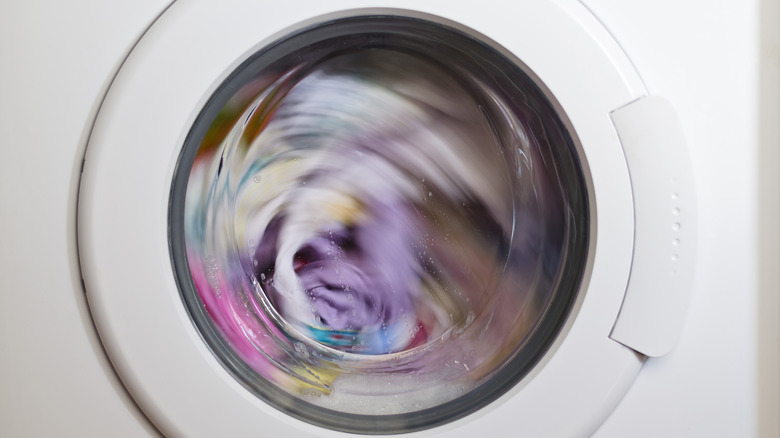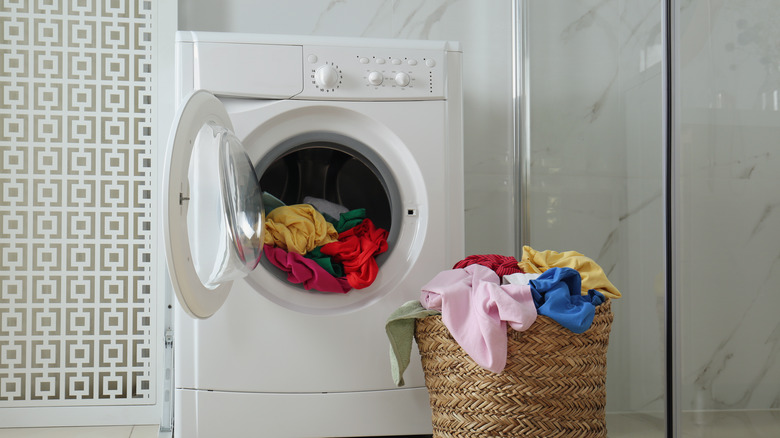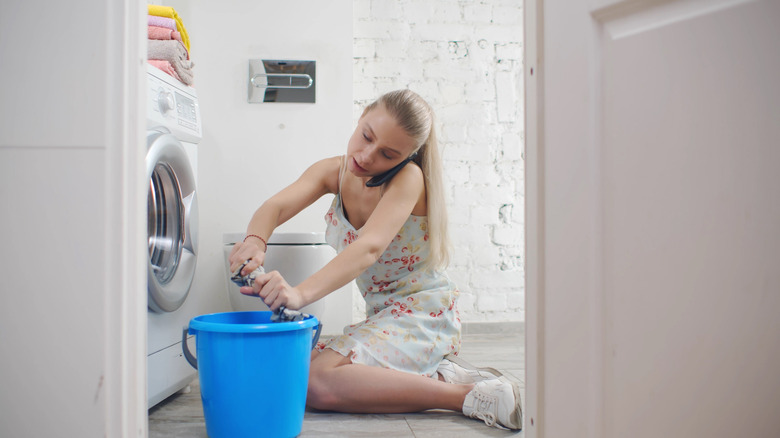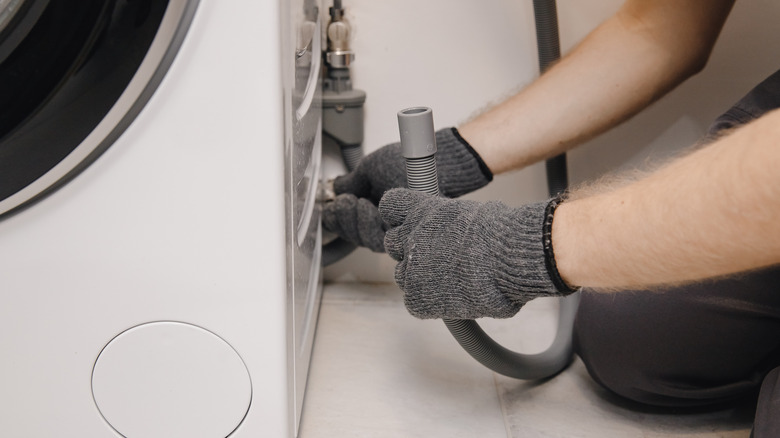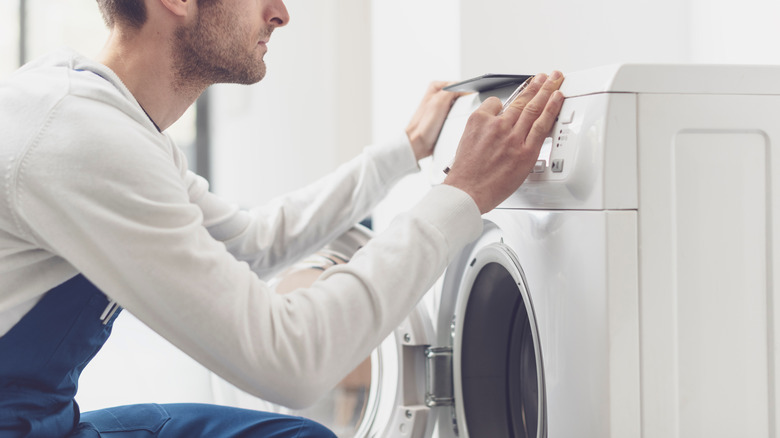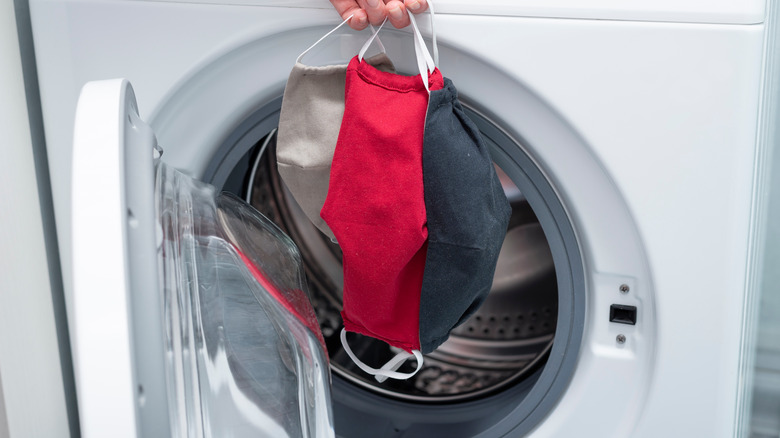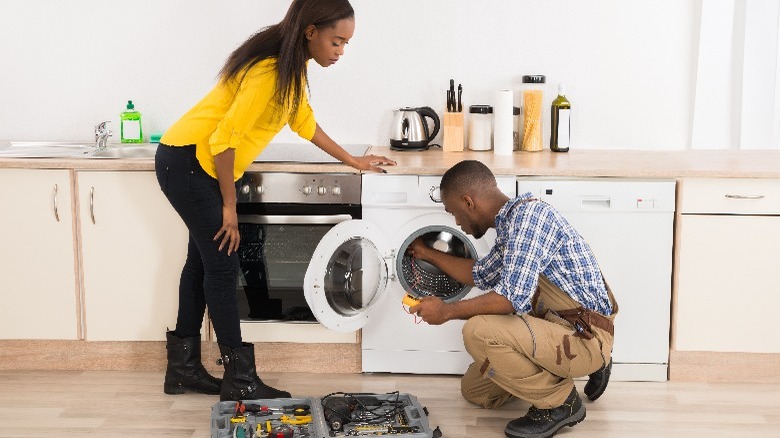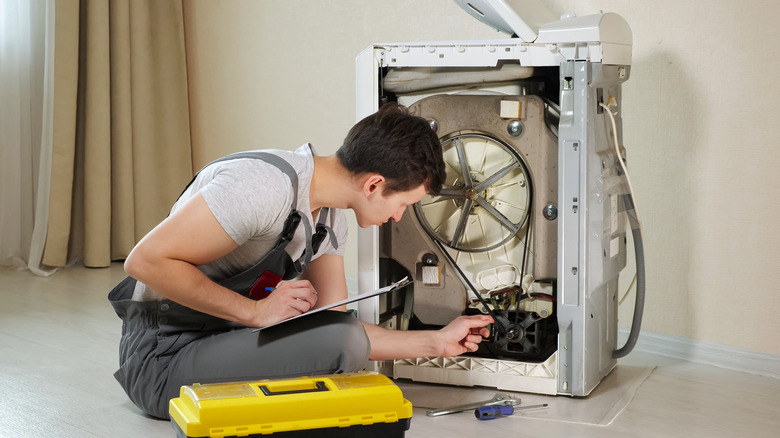How To Fix A Washer That Won't Spin
A washing machine that won't spin isn't really a washer at all, but more a giant tub of laundry soup. As one of our most vital home appliances, when the washer breaks, we need it fixed as fast as possible. Fortunately, many of the reasons your washer isn't spinning can be solved in quick and simple ways. According to the Repair Clinic, both top-loading washers and front-loading machines operate with an electronically driven drain pump that "sucks out" the water as the washing machines spins. Top loading washing machines are typically driven by a belt and motor to generate a spin, while front-loading washers can sometimes have magnet-based motor control. Additionally, front-loading washers often have a feature called a "coin trap," which can affect drainage and spin as well.
While a washing machine can spin but not drain, or drain but not spin, the reason for these malfunctions is often related. Easier repairs related to your washing machine not spinning can include things like improper loading techniques and clogged drains that you can easily DIY with the proper guidance. Often, even simple mechanical repairs are accessible to home fixers as well. Less frequent, there will be more complex issues with your mechanics on the digital operating system that may require a professional repair expert, but don't despair until you've checked all of these options below.
Lighten the load inside the washer
Washing machines are robust machines that can handle significant quantities of water and fabric, but every motor has its limit. Hunker describes an overloaded washing machine as often triggering an unbalanced barrel or tub that doesn't spin correctly. First, stop the machine and remove some clothes, then try again. If the first attempt doesn't work, remove even more clothes or empty the machine if required.
If the amount of fabric in the machine is not the problem, many washers need a simple reset. Unplug the machine, wait five minutes, and then try again. If that doesn't work, move on to the next troubleshooting option.
Rebalance the load in the washing machine
Sometimes, it's not about how many clothes are in your washing machine but how your items are distributed. Pillows and comforters can be major culprits in an unbalanced washing machine triggering an unbalanced barrel and significant noise.
If your washing machine is brand new and not spinning correctly, SFGate suggests you check the installation, not the load, as washing machines must be on completely level platforms or floors. If a new washer is not spinning correctly, check for proper installation first.
Check or repair the washing machine drain hose
If a washer is spinning but running too slow to rinse your clothing properly, the problem may be a clogged drain. Hunker suggests checking your washing machine hose for kinks or clogs. In some cases, there may be dirt and debris clogging the hose as well.
Repair Clinic also recommends checking the "coin trap" on front-loading washers. This feature acts like an additional filter to catch all those accidentally laundered items like shopping lists and spare change. Emptying and cleaning this washing machine filter may be enough to fix the issue if the hose is otherwise in good condition.
Check for blown fuses
A blown fuse by itself probably isn't the cause of your washing machine's refusal to spin — but it could be related. Washing machines often have a fuse that manages the heating element if one is included, according to eSpares.
There may also be something wrong with the mains filter, a part that helps keep each electronic component operating separately. Either way, if you notice smoke, burning, bulging, or damage, you should consider turning off the spin cycle and calling an expert.
Check the washing machine lid safety switch
Washing machines built since 2015 have both a lid lock and a lid switch feature, according to Little Home Appliance. Lid switches are the part of the device that senses whether or not the lid is open and typically trigger the device to stop if set off.
Lid switches have been around for many years, and a broken one will stop your washing machine from spinning. Lid locks are slightly different but are an added safety feature. Lid locks prevent a washing machine from opening during potentially dangerous cycles like the load sensing and spin cycles. A faulty lid switch or lid lock may prevent a washer from spinning.
Replace the drive belt in your washing machine
If you have a belt-driven washing machine, the belt itself may be the cause of your washing machine's lack of spin. The drive belt, a device similar to those in automotive engines, is typically a rubber connection device that spins using the power of the machine's motor and is connected by a drive coupler, according to Repair Clinic.
If the culprit is one of these more simplistic parts, you can usually find a replacement at your local appliance store and manage this repair yourself with minimal time and expense.
Replace the motor in your washing machine
The most expensive and complex reason your washing machine may not spin is an error in your washing machine motor, although there are many components to any motor and assembly. Depending on what causes this motor failure, it is likely that you will need an expert repair person or a motor replacement. Sometimes, motor issues can lead to the need for a new washing machine — so it's best to estimate repair costs and consider the value of a replacement.
HomeServe recommends basing your decision on overall factors like the age and efficiency of your machine and if the repair will cost higher than 50% of the price of a new unit.
